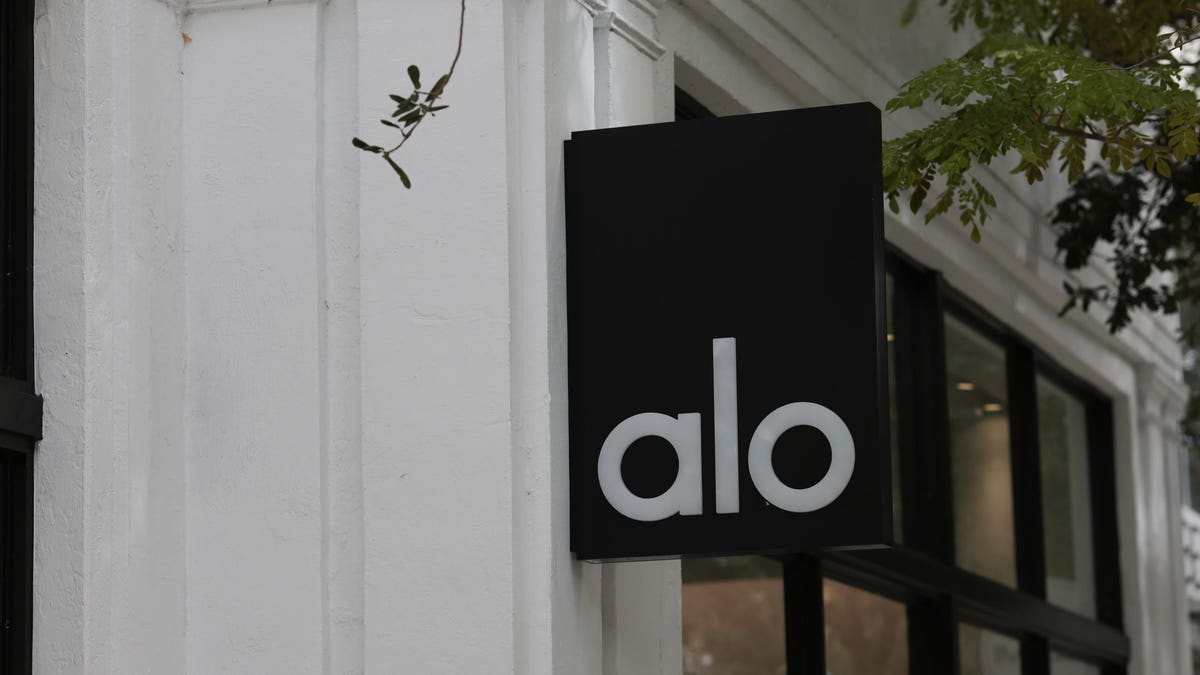Founded by childhood friends Danny Harris and Marco DeGeorge in 2007, Alo – which stands for Air, Land and Ocean – has taken the fitness industry by storm and thrown shade at Lululemon, the pioneer of yoga and athleisure.
Alo Yoga is one of the brands that saw a considerable surge in popularity during and post-covid, enjoying +32% in revenue in 2022 to reach over $1 billion in sales. Not bad for a privately-owned company that operates in the crowded space of fitness and wellness. With a main presence in North America and 43 stores, the brand is now aiming to set foot into the European market, with stores in London and Paris set to open between the end of 2023 and the start of 2024.
And while Alo is definitely a strong, digitally-anchored brand, providing fitness classes via its on-demand classes platform Alo Moves, generating the majority of its sales via e-commerce and recently entering Web3 through a Roblox partnership, its physical footprint is certainly part of its engagement and growth strategy.
Alo Yoga’s store strategy is rooted in its vision of wellness
The fact that Alo stores are called “sanctuaries” says a lot about how the brand goes about its retail footprint strategy. Alo sanctuaries are “the heart and soul of the brand — they represent an opportunity to get plugged into a new community in meaningful ways, they offer the unique experience of testing out performance-engineered styles in real-time, and they allow the chance to see the power of amla-powered, clean beauty firsthand,” as shared on the company’s website. Stores share similar features: they open in affluent cities and neighborhoods like SoHo, the Upper East Side, Aspen, Miami or Palo Alto, are bright, airy and rather minimalistic with a focus kept on products. Some even have built-in yoga studios and organic cafes, aiming to provide an elevated wellness experiences to customers.
With a rather limited footprint up until now and the majority of sales coming from its e-commerce channel, the company plans to accelerate the role of stores in its growth and expansion.“We started 2023 with 10 stores across U.S. and Canada,” Alo Yoga CEO Danny Harris shared in a recent interview with Footwear News. “Next year, we will have over 100 stores companywide. We will be opening one new store every single week. That’s pretty crazy to think about.” Some of these new stores include two in London and one in Paris, marking a new milestone for the brand whose success started and is mostly based in the U.S.
In-person activations help boost Alo Yoga’s wellness credentials and brand appeal
One of the reasons explaining why Alo Yoga is now throwing shade at Lululemon is its engaging, wellness-centered activations. While it learned from its rival the importance of community engagement – which Lululemon did really well for years – Alo goes one step further by creating social events filled with unofficial brand ambassadors, influencers and other guests who join by invitation-only the “Alo House” events. A true marketing move, this festival-like activation allows the brand to reinforce its wellness credentials amongst a younger audience (vs. Lululemon), promote new products and facilitate overall brand engagement. During Alo House days, guests can enjoy yoga classes, organic food, new products, and of course take many pictures to inundate their followers’ Instagram feed and contribute to building Alo’s strong brand awareness amongst a specific audience of young health and wellness enthusiasts.
Guests of Alo House are also invited to take part in mindfulness and healing activities such as reiki sessions, astrology reading and acupuncture. Amidst a wide range of wellness offerings, the company’s branding and products are evidently at the core of the experience, with everyone wearing Alo Yoga gear and receiving new products.
Alo Yoga has clearly gained cult-brand status, benefiting from accrued visibility gained both thanks to its own heavily branded events and celebrities wearing the brand’s matching sets. While it is still behind Lululemon in terms of revenue and store footprint (Lululemon generates around $8 billion a year and has 400+ stores worldwide), it has started to surpass its competitor in terms of appeal and is resonating well with a young audience who enjoy the functional, minimalistic yet fashionable traits of Alo workout sets. With further investments going into store and category expansion (its first drop of sneakers sold out in 30 minutes last May), Alo is certainly set for a bright future.
Read the full article here





